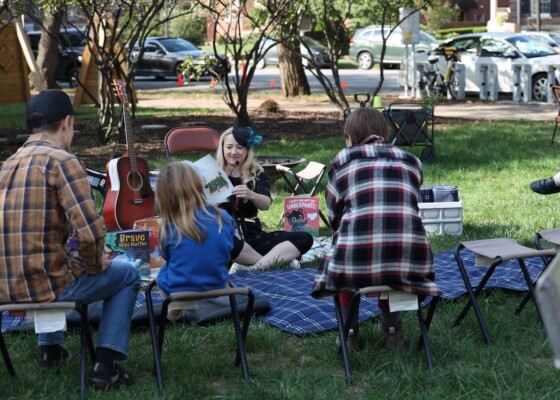How Rivalry Shaped Indiana
February 21, 2013Author and today’s guest blogger David Lottes writes about Indiana, New France and Vincennes.
You may not be aware that Indiana was once a part of New France. Long before the American Revolution or Indiana’s admission to the Union, the French laid claim to the land we know today as Indiana. In fact the future state of Indiana was split in half between the colony of Louisiana and the colony of Canada. A line drawn roughly from today’s Pittsburgh, Pennsylvania, west through the city of Terre Haute, Indiana, and onward to the Rocky Mountains denoted the border between these two colonies.
In 1729 New Orleans Governor Étienne Périer was anxious to establish trading posts to take advantage of the valuable fur bearing animals along Louisiana’s far northeastern woodland border. Louisiana was struggling and needed to secure a lifeline to the more established colony of Canada. In Canada the Governor General of New France, Charles de la Boische, Marquis de Beauharnois, was making a tidy fortune from trade with the Native villages along the Wabash River; however, he failed to realize that one of his most important assets was the young Ensign acting as Commandant of Post Ouiatenon.
François-Marie Bissot, Sieur de Vincennes, had spent his whole adult life living among the tribes of the Wabash Valley. His father was one of the first Frenchman to trade with these natives and they held his son in very high regard. Born a Canadian nobleman, François-Marie had ambitions of his own. When Governor Périer began looking for someone to establish a post for Louisianans along the Wabash, the Sieur de Vincennes was an obvious choice.
Governor Beauharnois was content with the Canadian fur-trading outposts on the Wabash and had little interest in expanding them into full-blown settlements. His young Ensign in charge at Ouiatenon had other ideas. Governor Périer offered Vincennes a promotion to Lieutenant and he gladly accepted. Vincennes left Ouiatenon and convinced a village of local natives to move with him to his new location on Louisiana’s stretch of the Wabash. The new trading post helped secure the route between Montreal and New Orleans, but the colony of Louisiana continued to struggle.
In 1732 the value of land in Louisiana crashed due to speculation and the colony was on the verge of collapse, Jean-Baptiste Le Moyne de Bienville replaced Périer as Governor and the future of Bissot’s post on the Wabash was in jeopardy but the Sieur de Vincennes was not without his own means of securing his fortune. He convinced several families from his boyhood home of Montreal to move south to his Louisiana settlement. At his own expense he helped provision these families for the journey and made sure his native allies welcomed them to their new home. Soon “The Post,” as it was called, began to thrive.
Today Vincennes, Indiana is unique in that it is the only city in the state established by the French that has been continuously inhabited since it was first settled. The rivalry between Louisiana and Canada that caused Governor Périer to lure François-Marie Bissot away from Canada proved to be one of the most important events in Hoosier history. The settlement of Vincennes would go on to become a refuge for French people escaping the British occupation of Canada after the French and Indian War. These French expatriates would provide support and supplies to General George Rogers Clark during his campaign to capture the Northwest Territory from the British.
Vincennes became the Capital of the Indiana Territory soon after it was established in 1800, and when Governor William Henry Harrison marched to Prophetstown in 1811, his army mustered just north of the city. In 1812 the capital was moved to Corydon because Harrison feared that Vincennes was too easily accessible to the British by way of the Wabash. Today Vincennes is still known as the city of firsts, home to the oldest Catholic congregation in the State, the oldest university west of the Alleghenies, and the oldest Georgian-style mansion built in Indiana.
Rivalry shaped Indiana from its very beginning, and one could say that the rivalries are alive today in the form of Big Ten basketball teams, deep forests and vast prairies, small towns and big cities. In many ways Hoosiers continue to define themselves by their rivalries.
The son of a history teacher and descendent of a family that settled in Indiana before the war of 1812, David Lottes grew up along the Tippecanoe River. David attended Vincennes University where he earned an Associate of Science degree and later earned a Bachelor of Fine Arts degree from Ball State University. David currently resides on the Salt Fork of the Vermilion River in Central Illinois and works as a cataloger for the Illinois Heartland Library System. For more information on his novel about French settlement in Indiana visit: www.ouabache.info



